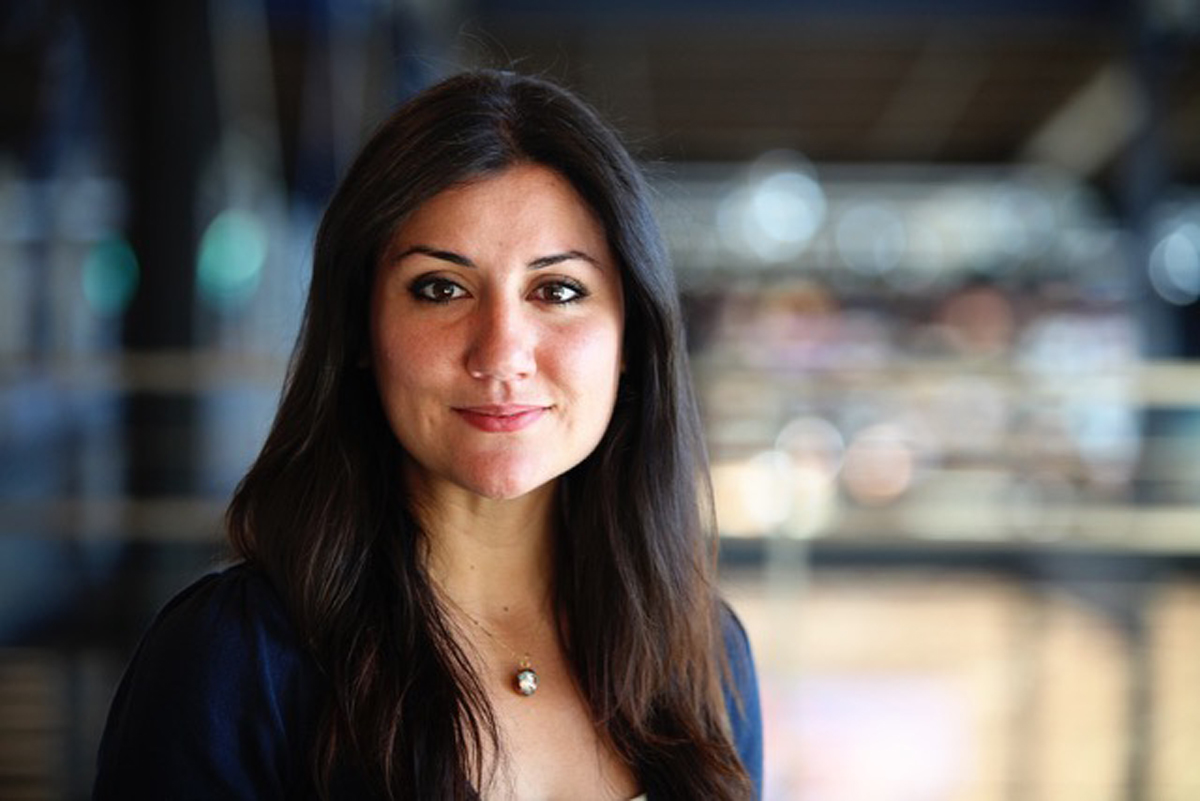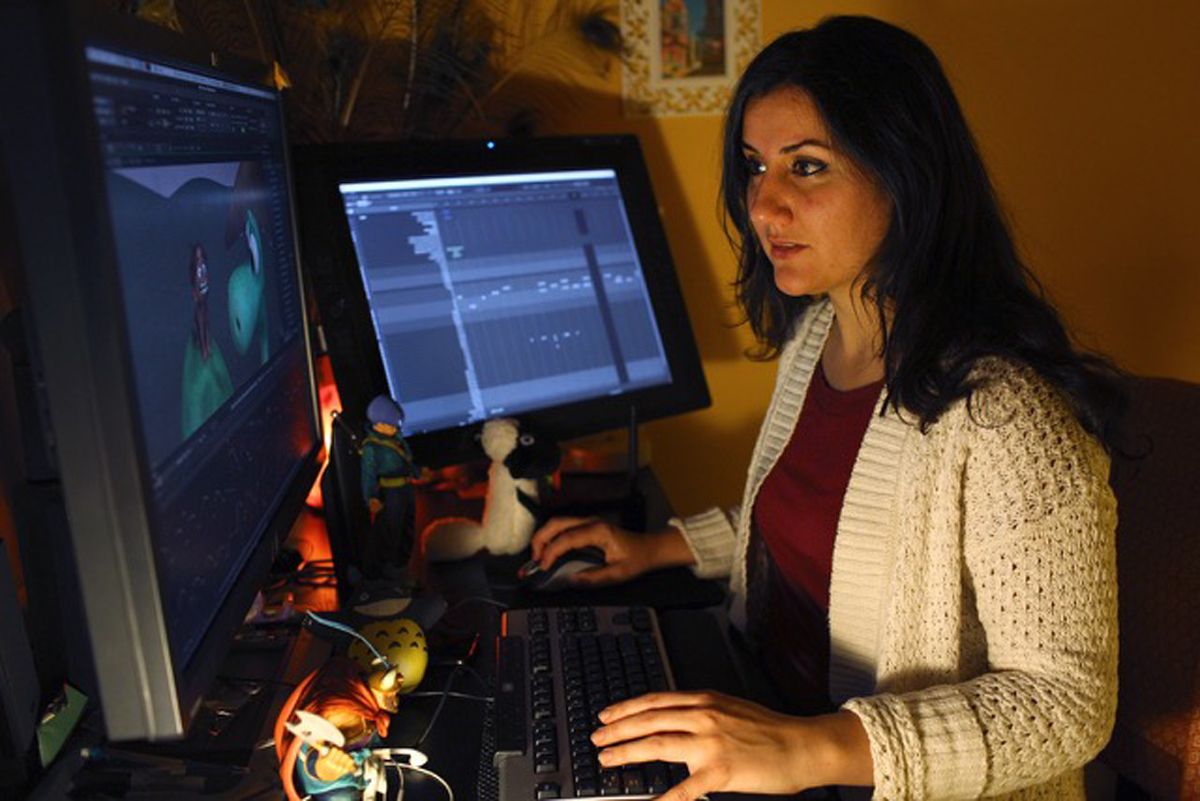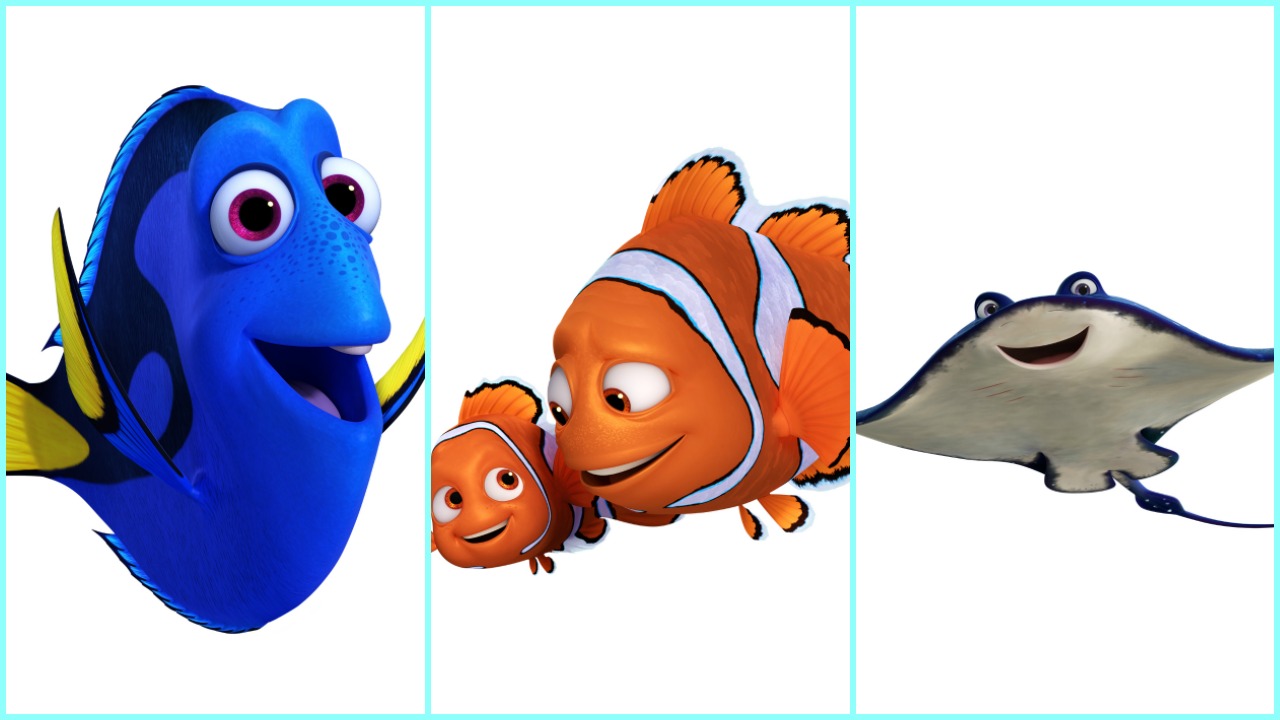
- Industry
Putting the Action into Animation: Carolina Lopez Dau, Climbing the Ranks at Pixar
“It doesn’t matter where you come from – if you barely speak the language, or genders – it all comes down to the work done at one’s desk and what you have to offer”, asserts Carolina Lopez Dau about working in the male- dominated field of animation.
One of the growing number of women in the industry, the Pixar employee grew up watching cartoons and playing video games with her brothers and their friends in her native Spain. “My parents were computer programmers, so we had access to computers in our home for as long as I can remember”, Dau reminisces. “My brothers and I would watch TV cartoons together, recreating those worlds and characters through drawings; each of us had our own personal inclinations: my elder brother would draw cars and vehicles, the middle one liked characters from video games and cartoons, such as Sonic or Goku. My interests went in the direction of Sailor Moon and Japanese animation characters.”
That love of drawing led to an initial study at the college of Fine Arts but she began to question what her professional future would be. Her brother, already employed as an animator, suggested she switch to a small school in Madrid, where she grew up. For other women who are not as technically savvy as Carolina but love drawing, she advocates animation, “Many of the animation companies have their own software that you have to learn initially,” she explains. “Knowing how to draw is helpful, but not vital as the computers do the animation.” Drawing and software fluency are interlinked.
Initially employed for ‘crowds animation’, where attention is given to ensure that every background scene is roughly equal parts male and female – unless the narrative dictates otherwise – she became part of a team of 130 animators, mostly male. However, Pixar is actively working to change that gender disparity by connecting female mentors with schoolgirls. They share emails and visit the studio where they tour the facilities, exposing girls to the option of animation as a career choice.

Exposure to programming is just one aspect that has allowed the girl who loved to ride bikes with her brothers as a child to flourish. “I have had fantastic mentors. Javier Moya, helped me enormously to grow as an animator, he’s been great as a source for feedback on my work. Andy Beall, an Animation Manager, encouraged me to ‘speak my voice’ and communicate my goals. Communication enables us to work together towards them, even though for me it was not easy at the beginning.” Given that most animation departments run in a manner where self-advocacy is the rule (animators pitch their ideas in a group setting), speaking up is a vital tool to rising in the ranks. “It can be intimidating to speak up in a room like that, for either gender,” Adds Lopez Dau, “I came to realize the importance of asking for what you want. I don’t like to generalize but sometimes women feel the need to have a 360 degree knowledge before we feel ready to embrace something.”
“Communicating is also the only way one can learn if the place we are working at can provide what we need for our professional development or if we need to continue our journey elsewhere”, she highlights reasonably. “If there’s no communication about one’s goals, it can read as contentment with what we’re doing. Thanks to the unconscious bias that we all have in us to some degree, many times we fill in the gaps with assumptions, based on stereotypes and beliefs even when we don’t know the actual truth; this happens subconsciously if we are not careful.”
Continuing the theme of the importance of communication, Lopez Dau appreciates the feedback and interaction Pixar provides. “I’ve worked at places where the team was challenged to act fast and deliver. I sometimes felt the supervisor was ‘protecting’ me from the ‘challenge’. What that does is prevent you from having the chance to have access to work and perform as much as others. It may have been well intended but the message sent was a lack of trust, that was unjustified.” Was it gender based? “ Back then I didn’t associate it with my gender, but it could have been. I was the only woman on the team.”
At Pixar, women animators are invited to ‘women’s’ lunches, talks and seminars run by the Head of Creative Development, Mary Coleman, and Producer, Nicole Grindle. “They wanted to create a space that would help the individuals to strengthen their voices,” explains Caroline who was raised speaking Spanish, and initially was reticent to speak up due to the language barrier. “We are encouraged to offer opinions around a table or at meetings. This is so helpful as sometimes, to the individual, it can seem as though there is no room for that.” Guest speakers from inside and outside the studio are invited over lunch, to share their own professional experiences. “We get to have a conversation with them. We also have the opportunity to have coaching sessions on mindful and effective communication. This has been really helpful in gaining confidence and awareness about myself and the surroundings, and the way I interact with others.”
Animators bring to life many different types of characters – cars, fish, humans, toys, etc. We almost move them as ‘puppets’ inside the computer. We create performances for them, their personalities and the way they move trying to make the public empathize with them at a particular moment of the story. Our job is often described as being the ‘actors behind the curtain’.” She explains that during the production chain, the film arrives at the animation department in chunks. The Animation Supervisor then casts an animator to several different characters, who take into account an individual’s preference. The characters aren’t cast according to gender. “It’s our job to put ourselves in as many skins as possible. There are fantastic guy animators that have been cast to female characters and have done a great job without falling into stereotypes, and vice versa.” The equality spreads beyond the actual work. “Pixar offers really nice support for women and men that are having a family, providing time off for both parents, and great conditions when the mother wants to slowly incorporate back to work.
Finding Dory opens in theaters on June 17.

Dory, Marlin and Nemo, and Mr. Ray.
Pixar
In the upcoming Pixar production Finding Dory Carolina worked as an animator. Her duties were to bring characters to life on specific moments of the story, following the director’s vision with the goal of creating empathy with the characters emotions. She has worked on different scenes animating the characters of Dory, Marlin and Nemo, as well as some humans that appear in the film.
Her advice to would-be animators? Other than being a good team player one of the things we look for in an animator’s portfolio are fresh ideas and original acting choices. “People that work at animation studios like Pixar are first of all human beings, and if we are here, you could make it – you can too. It takes continuous work with an eye for opportunities, such as job openings or summer internships.”
And she has one last bit of advice for would-be animators, “Know to discern between constructive feedback and destructive comments. Take the feedback and understand it. Ignore negative comments other people can make. Those are generally issues that people have with themselves and have little to do with yourself and your path.”